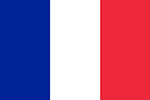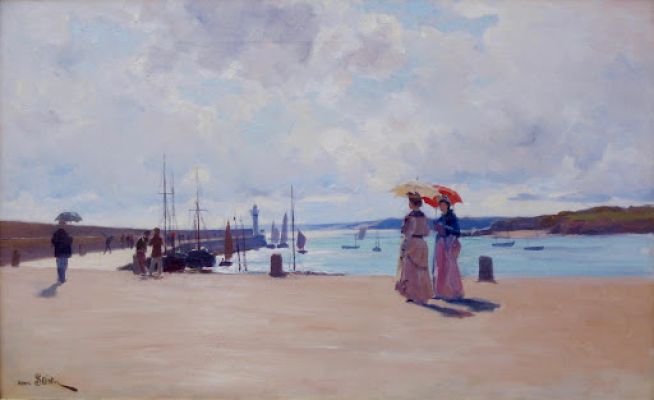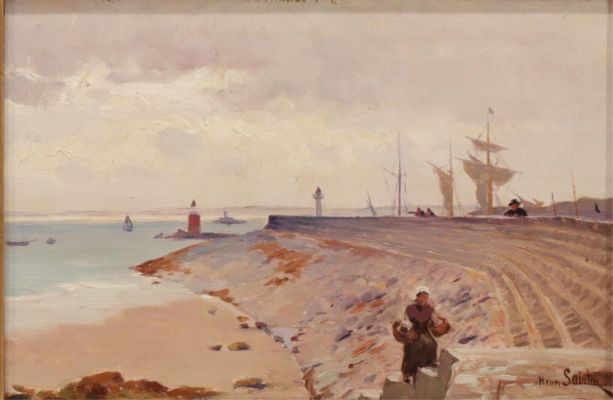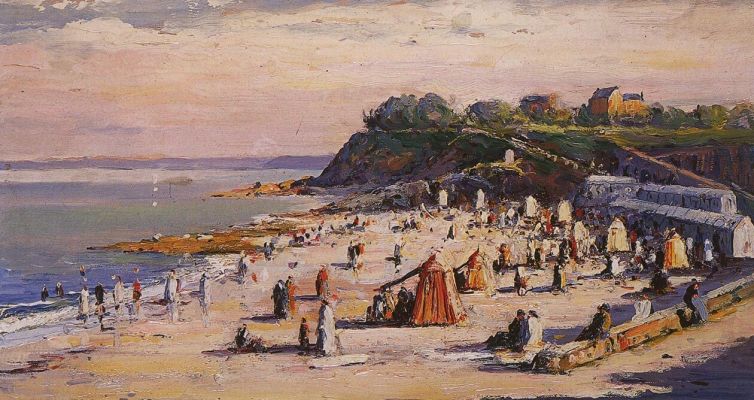And many other artists in Saint-Quay-Portrieux
Many other artists, with varying degrees of fame, left traces of their time in Portrieux, then Saint-Quay-Portrieux. Not all of them can be mentioned here.
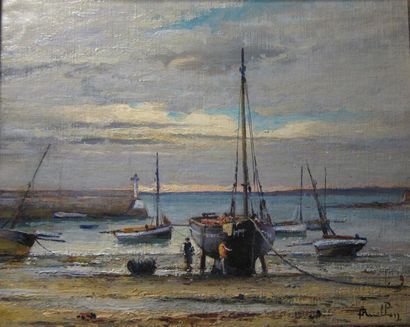
Le port – Joseph Alexandre Ruellan
Philippe Matozrec (1726-1801) born and died in Portrieux
In the chapelle Sainte-Anne, the altarpiece L’éducation de la vierge, painted by Philippe Matozrec in 1777, was commissioned by the conseil de fabrique. A detail of this biblical scene depicts the harbour’s first pier, with a small shipyard.
Matozrec mainly illustrated religious scenes and miracles, depicted on large canvases, some of which can be found in the Basilica of Sainte-Anne-d’Auray.
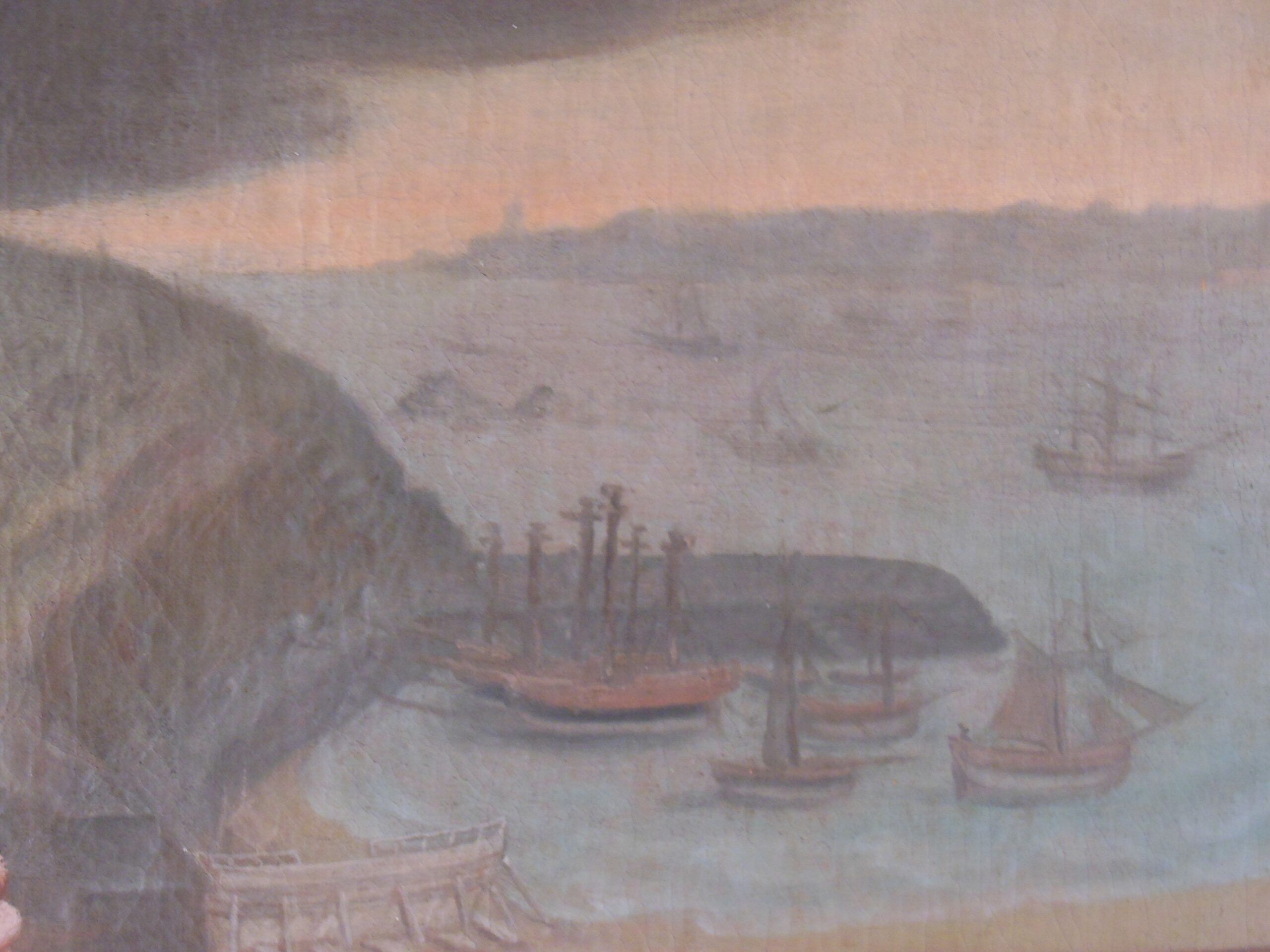
L’éducation de la Vierge (détail) – Philippe Matozrec – 1777
Jean-Baptiste Leopold Levert (1819-1882)
A painter and engraver, he co-founded the Société anonyme des artistes peintres, sculpteurs et graveurs in 1874. His pupil was Henri Rouart, with whom he visited Brittany. Levert spent the summer of 1875 at Le Portrieux and sent nine paintings, including four of Le Portrieux, to the 1876 Impressionist Exhibition in Paris.
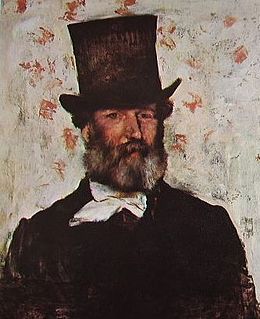
portrait de Jean Baptiste Levert – Edgard Degas
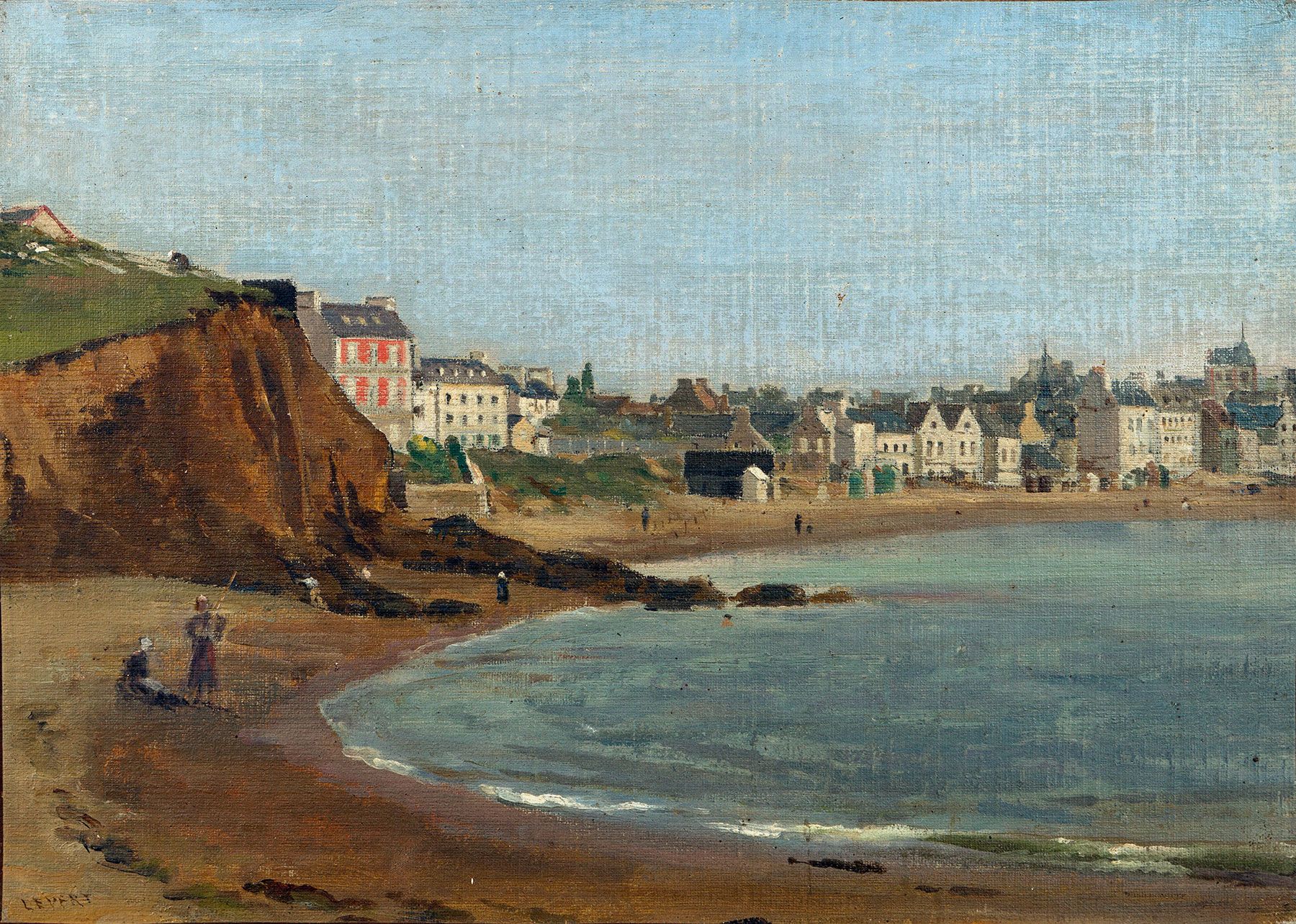
Vue du port depuis le Port-es-Leu – Jean-Baptiste Levert – collection particulière
Henri Rouart (1833-1912)
An engineer and industrialist, Henri Rouart took up painting late in life. Degas was his friend, and he painted regularly with Millet and Corot. Very close to the Impressionists, he was also their patron and collector.
He discovered our region in 1866 with the painter Levert, his teacher, and stayed in Portrieux and Bréhat in 1873.
Henri Rouart was the pillar of a large family of painters, writers and philosophers. In 1900, his son Ernest married Julie Manet, daughter of Berthe Morisot.
Louis Marie Faudacq (1840-1916)
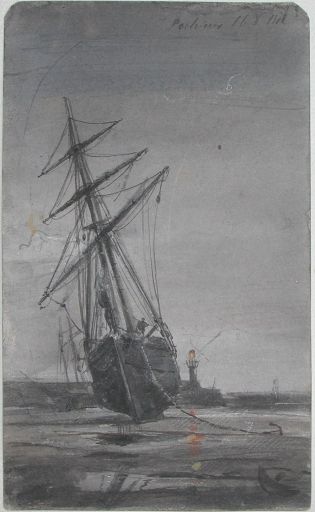
Portrieux – Louis Marie Faudacq
His family originally came from Brittany in Goélo, but Faudacq didn’t settle there permanently until 1868.
His job as a customs officer enabled him to survey the entire coastline on foot during his inspection rounds. Affectionately called “gobe la lune” by his friends, Louis Marie Faudacq roamed the coastal paths with his dog, day and night.
Strongly built, dressed in a velvet jacket and wearing shod shoes, Faudacq always carried his sketchbook with him. With a sure hand, he sketches the coastal landscape, port facilities and the evolution of the foreshore with the tides, on the coast and along the Trieux.
He sketched trades, the lives of farmers and sailors, and boats with precise descriptions, leaving us with highly evocative chronicles of everyday scenes.
From 1885 to 1894, Faudacq was a contributor to Le Yacht, a boating magazine in which his faithful sketches and illustrations of boats are to be found.
His immense body of work is a precious testimony to local life in Goélo at the end of the 19th century. He was spotted by Signac, who became his first collector and brought recognition to his work. After his death, Faudacq’s work was to find an echo among enlightened art lovers.
Retired to Ploubazlanec, Faudacq died in 1916.
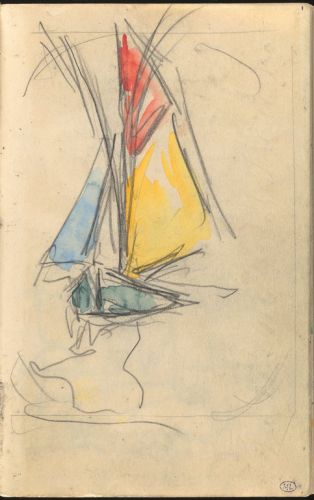
Paul Lecomte (1842-1920)
Uncle of Paul Emile Lecomte (official naval painter), Paul Lecomte came to Portrieux during his many stays in Brittany.
The atmosphere of his paintings makes him one of the last representatives of the Barbizon school.
Louis Henri Saintin (1846-1899)
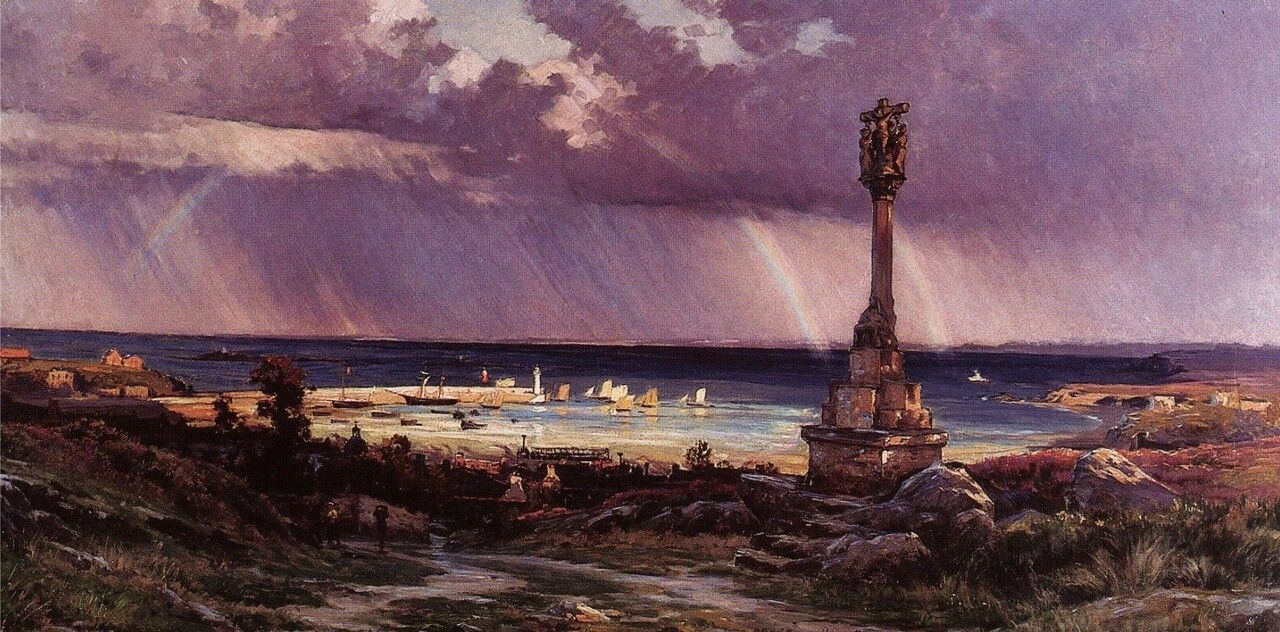
Après l’Orage – Louis Henri Saintin – 1894 – Collection Musée d’art et d’histoire, Ville de Saint-Brieuc
This large canvas (136 x 200 cm), painted during a stay at Portrieux, was exhibited at the Salon de la Société Nationale des Beaux-Arts in 1895, then donated to the Musée de Saint-Brieuc in 1902.
“After the violence of the storm, in the luminosity of the sky and sea, the port seems to emerge from the dark green palette of the moor. This painting is a studio composition, the addition of the calvary, probably the one on Rue Louais, a reference to Breton piety.” (Denise Delouche)
Louis Henri Saintin is a painter of landscapes and still lifes, close to the Barbizon school.
Born in Ivry sur Seine, he died in Paris, but after painting around Fontainebleau, Henri Saintin nonetheless drew his inspiration from Brittany.
Thanks to his painter friends Alexandre Ségé and Francis Blin, whom he met at the Ecole des Beaux-Arts in Paris, Saintin discovered Brittany and settled in Plurien near Cap Fréhel in 1875.
A contemporary of Eugène Boudin, this artist, sensitive to changes in the weather, particularly frequented the Côtes du Nord in all seasons, from Erquy to Saint Cast. He produced one hundred and twenty-six works at his favorite sites, as well as numerous drawings and watercolors.
Louis Henri Saintin criss-crossed the coasts of the bay, studying in situ the variations in light as the hours and tides went by. Gifted with a keen sense of observation, he was commissioned to illustrate the Montfort-sur-Meu region for an inventory of Ille-et-Vilaine’s heritage.
In 1870, Louis Henri Saintin joined a group of dissident artists who disagreed with the split of the Salon into two exhibitions.
Saintin is a painter whose career remains discreet, despite a substantial body of work. He exhibited extensively for 25 years, but sold little to art dealers. No doubt out of modesty, he willingly gave his paintings to amateurs who were sensitive to the Breton atmospheres he transcribed in his canvases.
On his death, the contents of his studio were auctioned off at Drouot.
His paintings can be found in the Louvre, Orsay, Carnavalet, Rennes and Saint-Brieuc museums.
Emile Clavel (1848-1932)
Attracted by the shores and light of Saint-Quay-Portrieux, Emile Clavel bought a plot of land above the Grève-noire in 1895 and had his villa built there. He was a member of the Société des Artistes Français and exhibited regularly. Most of the works he painted here are in private collections, and some fifteen were shown in an exhibition at the town hall, entitled Deux frères artistes peintres entre 1887 et 1920.
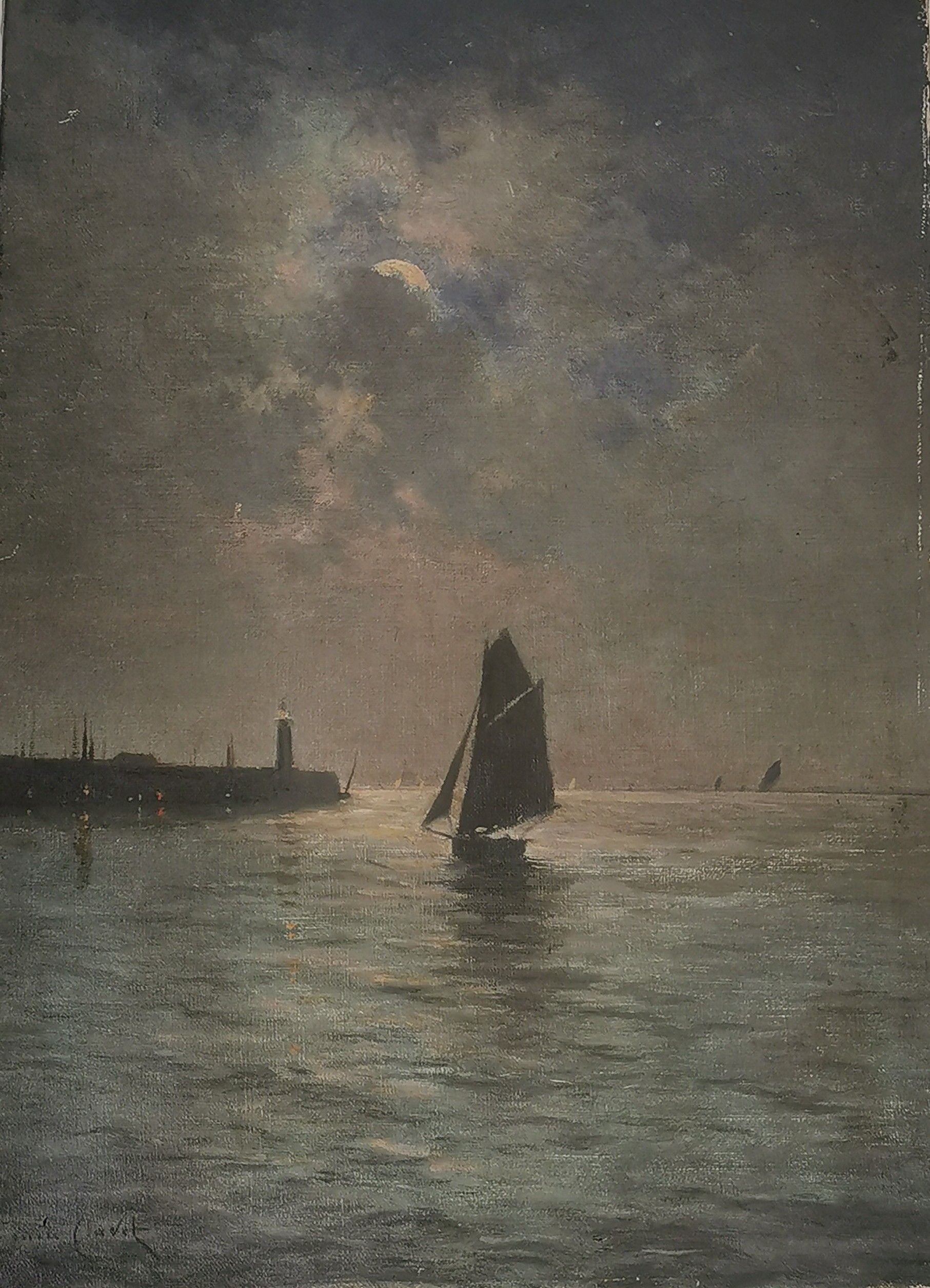
Le port – Emile Clavel -collection particulière
Marie-Joseph Léon Clavel , dit I Will (1850-1923)
Brother of Emile, Léon Clavel devoted himself entirely to painting. An avid traveler, his pastels, oils and diaphanous atmospheres of Venice and the Netherlands met with great success. He was a member of the Société des Artistes Français and exhibited regularly in this capacity. He is buried in Saint-Quay-Portrieux.
Numerous Parisian, foreign and provincial museums have acquired his paintings.
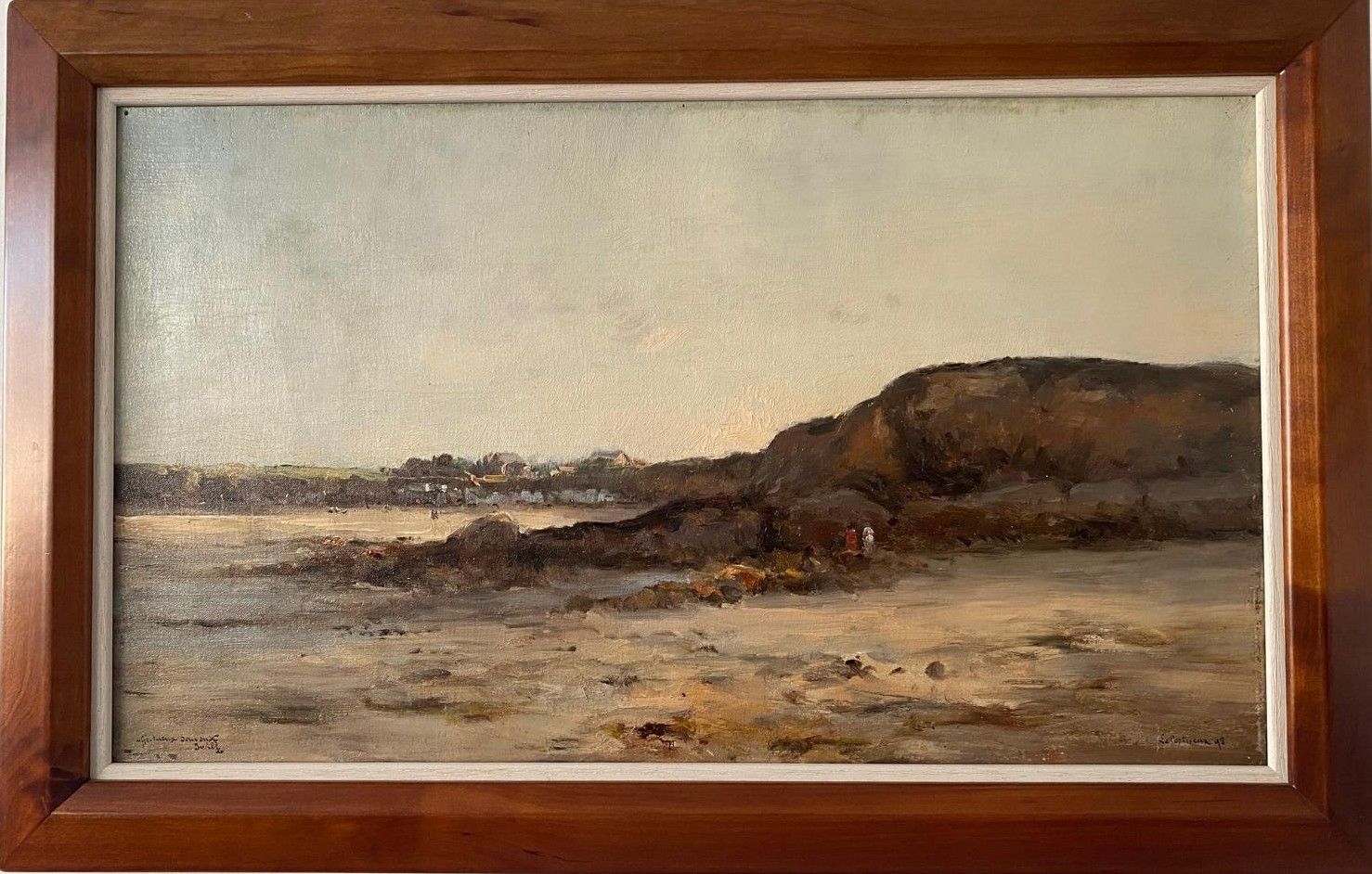
Portrieux – I Will – 1892 – collection particulière
Joseph-Alexandre Ruellan (1864-1931)
This painter, born into a family of shipowners in Saint-Quay-Portrieux, followed in the footsteps of his great elder Boudin, whom he admired. Until 1901, Les Armements Ruellan sailed a flotilla of ships to Newfoundland and Iceland. Joseph-Alexandre Ruellan, a local boy, took on numerous private commissions for wealthy individuals who appreciated his paintings. Some of his works can still be found in Quinocé families.
Some of his works can be seen at the Musée de Saint-Brieuc.
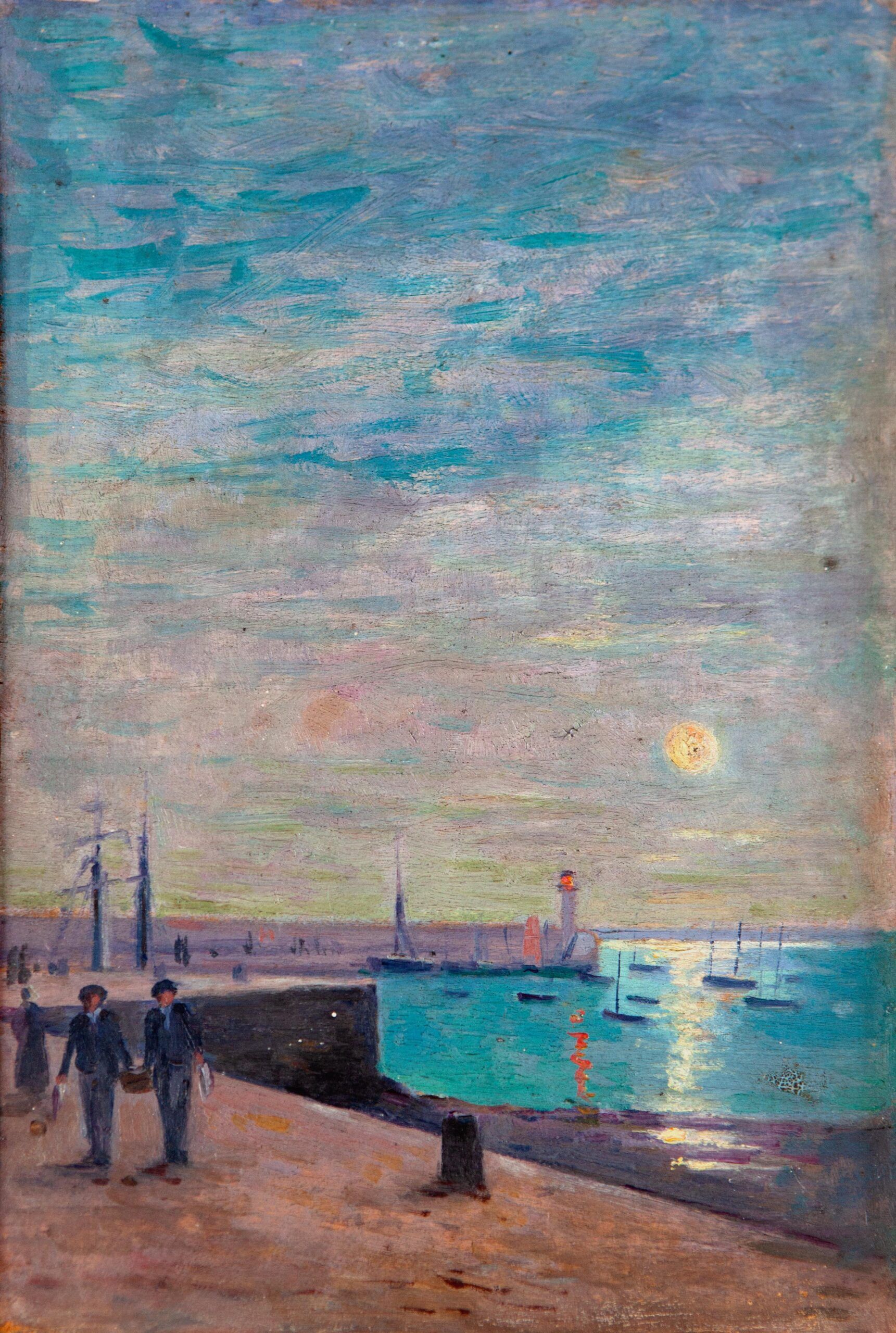
Lumière du matin – Joseph-Alexandre Ruellan
Marie-Thérèse Auffray (1912-1990)
Marie-Thérèse Auffray, born in 1912 in Saint-Quay-Portrieux, is a painter with an unusual career path. A member of the Resistance during the Second World War, she was involved in numerous political and intellectual organizations. Her expressionist works question the female condition, and her paintings are always engaged. A retrospective of her work was held in Saint-Quay-Portrieux in 2018.
(https://mariethereseauffray.wordpress.com/biographie/)
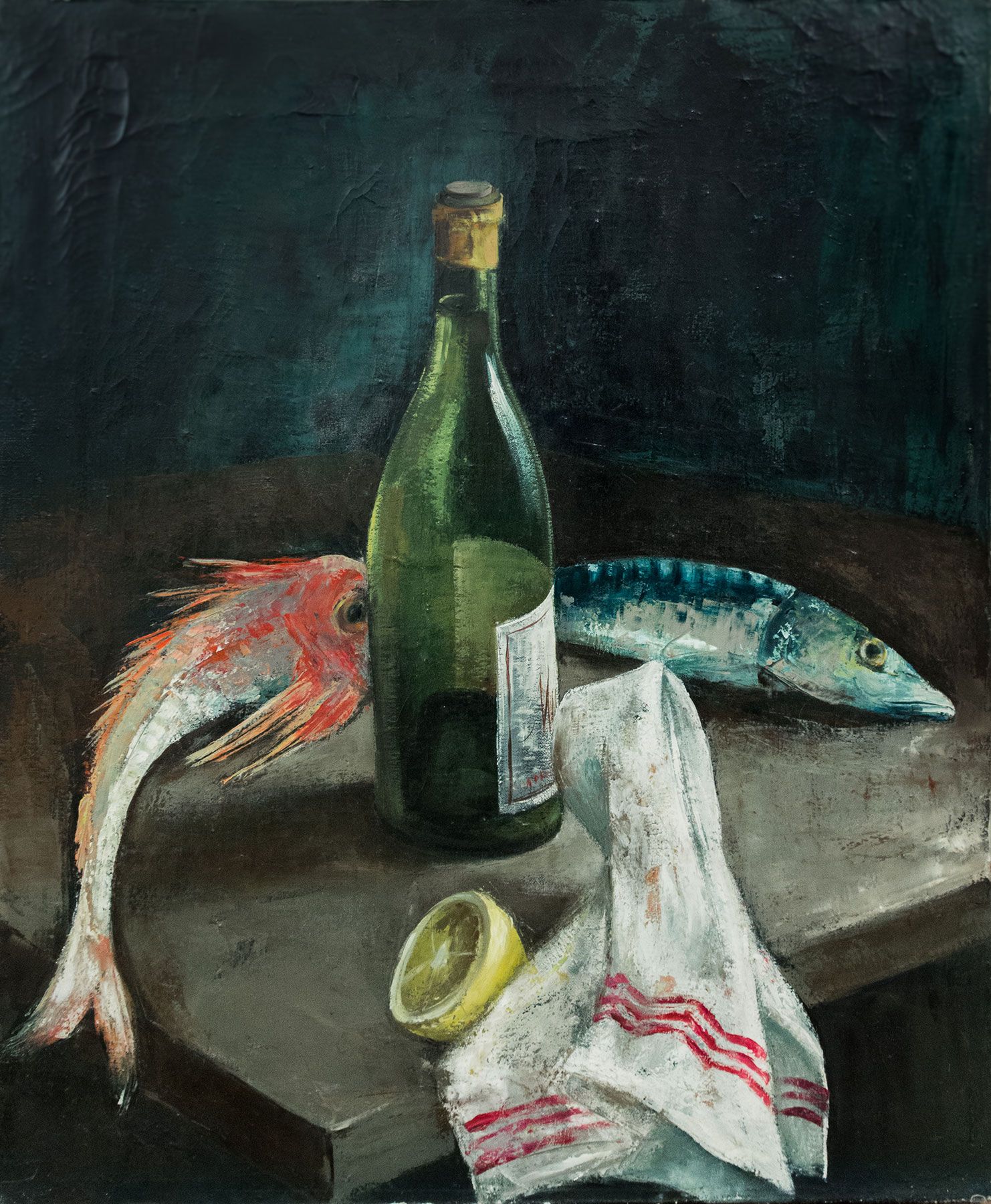
Maquereau et rouget grondin – Marie-Thérèse Auffray – 1955 – collection particulière
The official painters of the French Navy
are invited to Saint-Quay-Portrieux in 2016
The institution of the Peintres officiels de la Marine is a specific body of the French Navy. Members receive this distinction from their peers, painters, illustrators, sculptors, engravers, photographers and filmmakers, and hold the rank of corvette captain. The award entitles them to add a naval anchor after their signature.
Under the chairmanship of Jacques Rohaut, Jean Pierre Arcile, Michel Bellion, Michel Bernard, Jacques Coquillay, Cristoff Debusschere, Jean Pierre Le Bras, François Legrand, Jean Lemonnier, Guy L’Hostis, Jean Gabriel Montador, Christiane Rosset-Beaudesson, Stéphane Ruais and Anne Smith have each left us several works which have been the subject of a fine exhibition and catalog, published by the Friends of Saint-Quay-Portrieux and Surroundings.
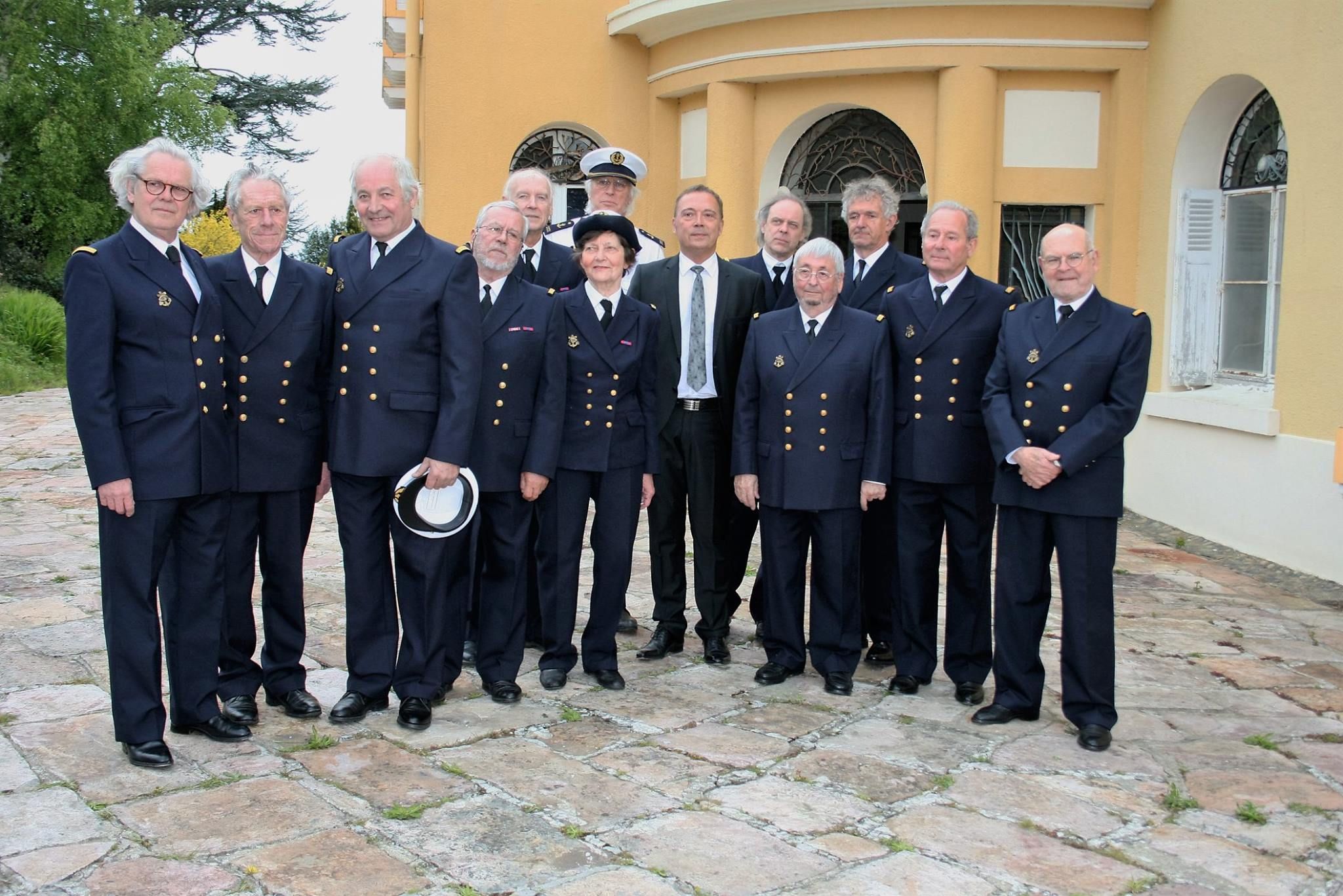
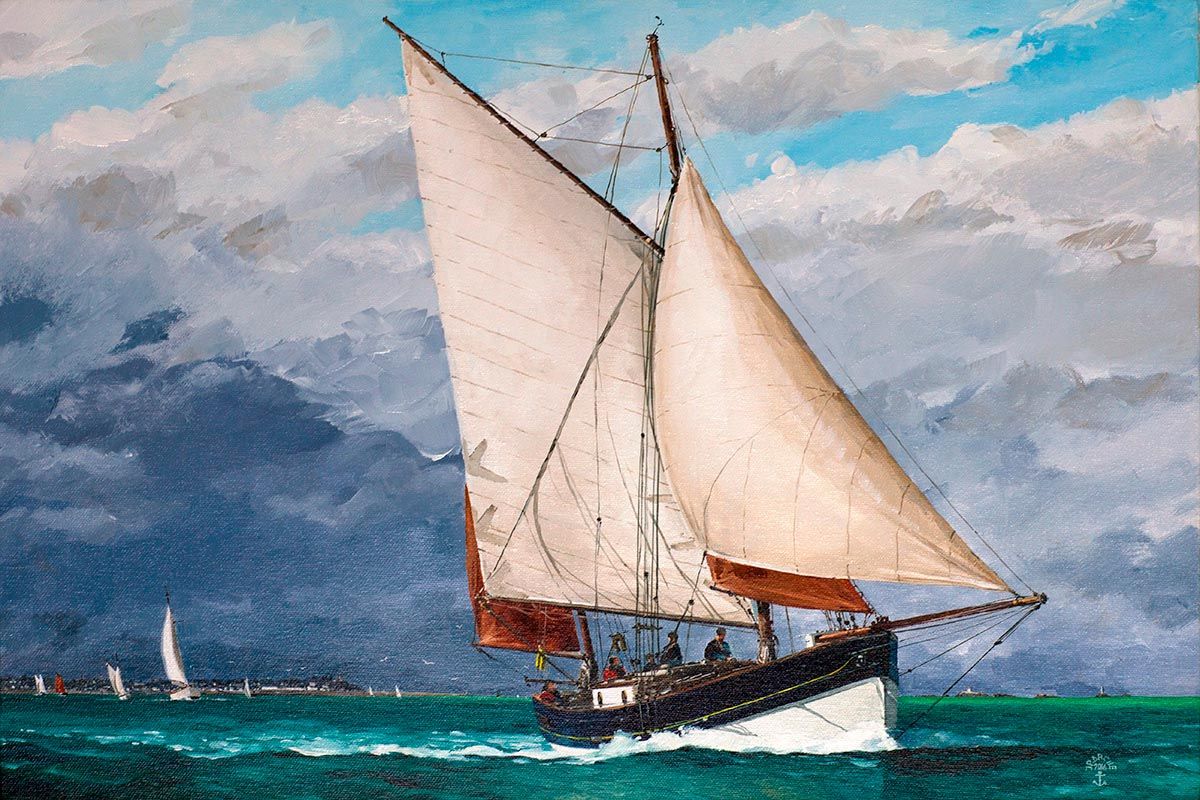
Le Saint-Quay – Jean-Pierre Arcile, peintre officiel de la Marine – 2016 – collection particulière
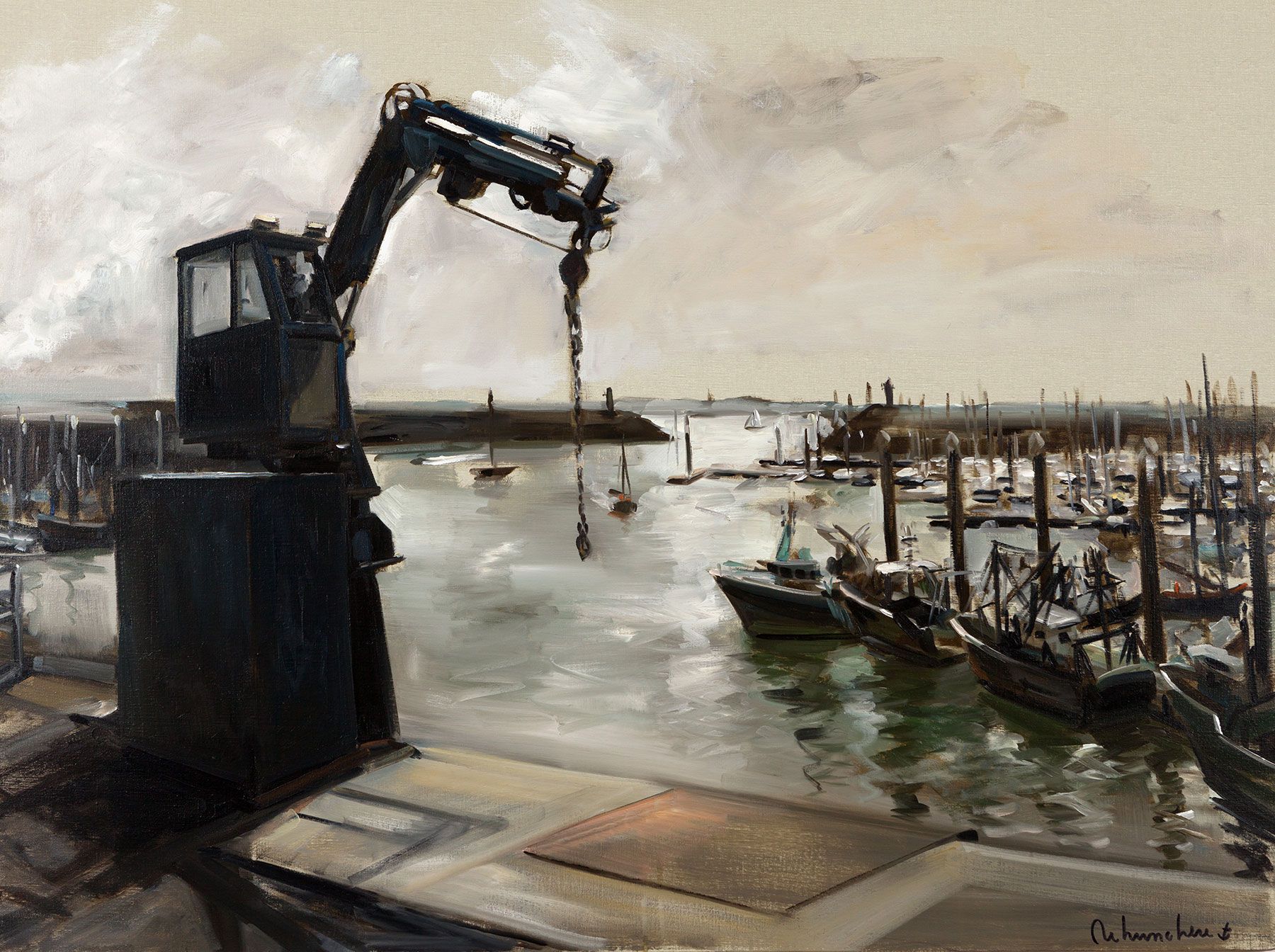
La grue sur le nouveau port – Cristoff Debusschère, peintre officiel de la Marine – 2016 – collection particulière
Jean Claude Fournier born 1943
Fournier, a comic strip artist and scriptwriter, is an integral part of Portrieux, where he lives. The author of numerous albums transports his readers into a world of adventure and dreams. With over fifty years of character creation behind him, Fournier’s drawings are evolving into a more realistic style, recounting adventures inspired by history.
Still in his bubble, Fournier published an autobiographical comic strip Ma vie de rêves in 2024. Jean Claude Fournier also welcomed and encouraged young beginners such as Emmanuel Lepage, the first comic book artist to be appointed official Painter of the Navy in 2021.
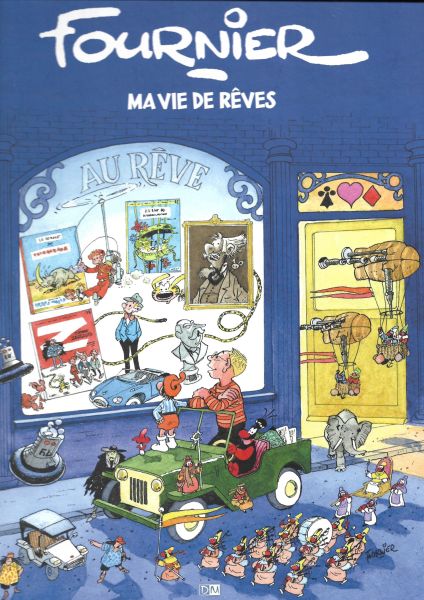
And then there are the painters who haven’t always received the recognition they deserve, who haven’t been favored by museums, and all the amateur artists who have come to our town one day to transcribe their emotions onto canvas. There are so many of them!
Quinocéen families are custodians of paintings, some of which were kindly lent to the “Le Portrieux, jadis et naguère, toutes toiles dehors” exhibition in 2018.
Whether in mist, squalls, light or full light for landscapes or port scenes, we discover each time, at different times, different techniques and sensitivities for each artist.
Let’s hope many more find inspiration in Saint-Quay-Portrieux.
